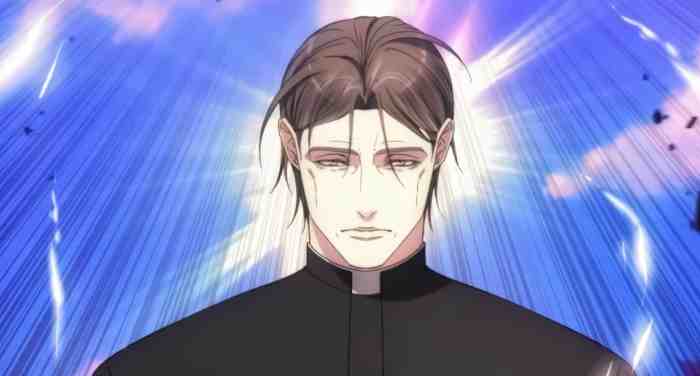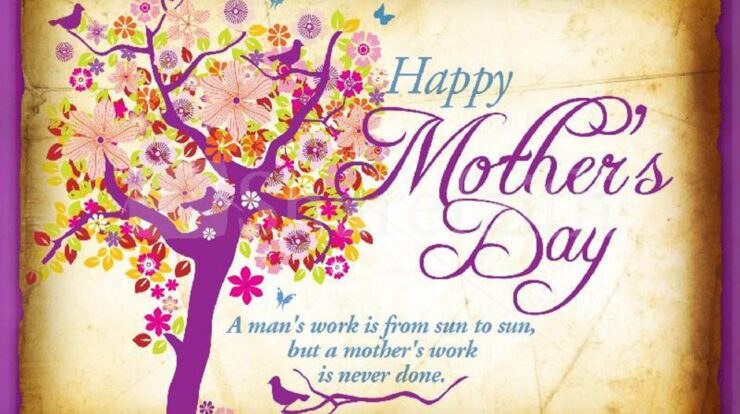
How to live as a villain ch 94 – Chapter 94 of the captivating tale “How to Live as a Villain” transports readers into a realm of cunning strategies, psychological manipulation, and the profound ethical dilemmas that define a villain’s journey.
The story delves into the intricate motivations and backstory of the villain, exploring the events that have shaped their malevolent nature and the complexities that reside within their character.
Villainous Strategies
The villain in the story employs a variety of cunning tactics and manipulative schemes to achieve their goals. They exploit weaknesses and manipulate situations to their advantage, leaving their victims feeling helpless and vulnerable.
How to live as a villain ch 94 presents an engrossing narrative that will keep readers on the edge of their seats. The latest chapter in the popular web novel series continues the captivating tale of a villainous protagonist navigating a treacherous world.
How to live as a villain ch 94 is a must-read for fans of the series, promising an unforgettable reading experience.
One of the villain’s most effective strategies is their ability to play on the emotions of their victims. They use flattery and charm to gain their trust, then exploit their vulnerabilities to manipulate them into doing their bidding. In one instance, the villain used a victim’s desire for revenge to convince them to betray their friends.
Psychological Impact
The villain’s actions have a profound psychological impact on their victims. The manipulation and betrayal they experience can lead to feelings of isolation, guilt, and shame. In some cases, the victims may even develop post-traumatic stress disorder (PTSD).
The villain’s goal is to control and dominate their victims. They use their cunning and manipulative skills to create a sense of fear and uncertainty, making their victims feel like they are at their mercy.
Character Development
The evolution of a villain’s character is a crucial aspect of crafting a compelling narrative. Understanding their motivations, exploring their backstory, and unraveling the complexities within their psyche provides depth and nuance to their villainous persona.
The events and experiences that shape a villain’s journey play a pivotal role in their transformation. Trauma, loss, betrayal, and injustice can fuel their descent into darkness, while societal pressures and systemic failures can contribute to their resentment and desire for revenge.
Motivations
- Examine the villain’s primary goals and desires, as well as the underlying reasons that drive them.
- Analyze the impact of past experiences, personal beliefs, and values on their motivations.
- Consider the villain’s perception of justice, morality, and the world around them.
Backstory
- Explore the villain’s childhood, family history, and formative events that have shaped their personality.
- Examine the influences and relationships that have contributed to their villainous path.
- Uncover any secrets, traumas, or turning points that have driven their descent into darkness.
Complexities and Contradictions
- Acknowledge the complexities within the villain’s character, including both positive and negative traits.
- Explore the contradictions and paradoxes that make the villain both relatable and despicable.
- Examine how the villain’s actions may conflict with their beliefs or morals, creating inner turmoil and tension.
Ethical Dilemmas
The villain’s actions often raise ethical concerns that challenge societal norms and moral boundaries. Their decisions frequently push the limits of what is considered acceptable, forcing others to confront the complexities of right and wrong.
Even with the challenges faced in “How to Live as a Villain” Ch. 94, maintaining good oral hygiene is crucial. For those seeking an alternative to traditional dental care, this guide offers practical tips on how to cure gum disease without a dentist.
By incorporating these methods, readers can improve their dental health while continuing their journey through the treacherous world of “How to Live as a Villain.”
The consequences of the villain’s choices can be far-reaching, affecting not only themselves but also innocent bystanders and the overall fabric of society. These ethical dilemmas serve as a reminder that even in the pursuit of personal gain or power, there are lines that should not be crossed.
Blurred Boundaries
Villains often operate in a gray area where the distinctions between good and evil become blurred. Their actions may be justified in their own minds, driven by a distorted sense of justice or a desire for retribution. This can make it difficult to determine the extent of their culpability and the appropriate punishment for their crimes.
- The villain may believe their actions are necessary to protect the greater good, even if they involve harming individuals in the process.
- They may have a personal vendetta against those they target, leading them to justify acts of revenge or retribution.
Consequences of Choices, How to live as a villain ch 94
The choices made by villains have significant consequences, both for themselves and others. Their actions can lead to physical harm, emotional trauma, and the destruction of lives. The villain may also face legal repercussions or the wrath of those they have wronged.
- The villain’s actions may result in the deaths of innocent people, leaving behind grieving families and communities.
- They may inflict lasting psychological damage on their victims, creating fear and mistrust.
- The villain’s own actions can lead to their downfall, as they may be betrayed by allies or defeated by their enemies.
Literary Devices

The portrayal of the villain in “How to Live as a Villain” employs a range of literary devices that enhance the character’s development and contribute to the overall narrative.
Symbolism, foreshadowing, and other techniques are interwoven to reveal the villain’s true nature, motivations, and the consequences of their actions.
Symbolism
Symbolism is a literary device used to represent abstract ideas or concepts through concrete objects or actions. In “How to Live as a Villain,” symbolism is employed to portray the villain’s inner conflicts, desires, and vulnerabilities.
For instance, the recurring motif of darkness and light symbolizes the villain’s struggle between good and evil, while the use of mirrors reflects their fractured self-image and the duality of their nature.
Foreshadowing
Foreshadowing is a literary technique that hints at future events or outcomes, creating a sense of anticipation and suspense. In “How to Live as a Villain,” foreshadowing is used to subtly reveal the villain’s ultimate fate and the consequences of their actions.
Examples include subtle references to the villain’s past traumas, their growing isolation, and the increasing tension between them and the protagonist.
The latest chapter of “How to Live as a Villain” has just been released, and fans are eagerly awaiting the next installment. In chapter 94, the protagonist finds himself in a precarious situation, and readers are left wondering how he will escape.
Meanwhile, Bexar Mecconline has released a new report on the latest developments in the ongoing conflict. The report provides valuable insights into the strategies and motivations of both sides, and it is essential reading for anyone who wants to stay informed about this complex issue.
Back to “How to Live as a Villain,” it will be interesting to see how the protagonist overcomes his current challenges and what new obstacles he will face in the future.
Other Literary Devices
In addition to symbolism and foreshadowing, other literary devices are employed to enhance the villain’s portrayal.
- Irony:Contrasts between expectations and reality are used to highlight the villain’s hypocrisy and self-deception.
- Imagery:Vivid and evocative descriptions create a sensory experience that immerses the reader in the villain’s world and motivations.
- Dialogue:The villain’s speech patterns, tone, and choice of words reveal their personality, beliefs, and intentions.
These literary devices collectively contribute to the development of the villain’s character, creating a complex and nuanced portrayal that explores the depths of human nature and the consequences of moral choices.
Villainous Archetypes: How To Live As A Villain Ch 94

The villain in this story draws upon a complex blend of classic villainous archetypes, showcasing both familiar and distinctive traits. At its core, the character embodies the classic “Byronic hero” archetype, characterized by a combination of charm, intelligence, and a sense of alienation from society.
In the world of web novels, “How to Live as a Villain” has captivated readers with its intriguing plot. In Chapter 94, the protagonist grapples with a formidable adversary. Meanwhile, in the realm of dental health, many seek alternative solutions to gum disease.
How to Cure Gum Disease Without a Dentist offers practical advice for those looking to alleviate discomfort and improve oral hygiene. As the battle rages in “How to Live as a Villain,” the pursuit of dental well-being continues.
However, the villain also exhibits elements of the “anti-hero” archetype, possessing a moral ambiguity that blurs the lines between good and evil.
One unique aspect of this villain is their ability to manipulate and deceive others. They possess a keen understanding of human nature and exploit weaknesses to achieve their goals. This trait sets them apart from many traditional villains, who rely on brute force or overt threats.
Instead, this villain operates in the shadows, using cunning and strategy to undermine their opponents.
How to Live as a Villain Ch 94 provides an in-depth exploration of the intricacies of evil, while simultaneously delving into the complexities of human nature. For those seeking to alleviate the discomfort associated with gum disease without the intervention of a dentist, this comprehensive guide offers a wealth of practical solutions.
Returning to our initial topic, How to Live as a Villain Ch 94 continues to captivate readers with its nuanced portrayal of the protagonist’s descent into darkness.
The portrayal of villains in literature has been shaped by various cultural and historical influences. In the past, villains were often depicted as one-dimensional characters, serving as obstacles for the protagonist to overcome. However, modern villains are often more complex and nuanced, reflecting the evolving moral landscape of society.
The villain in this story exemplifies this trend, challenging traditional notions of villainy and forcing readers to question their own moral judgments.
Closing Notes
As the narrative unfolds, the boundaries between right and wrong blur, and the consequences of the villain’s choices reverberate throughout the story, leaving readers questioning the nature of evil and the potential for redemption.
Common Queries
Who is the villain in Chapter 94?
The identity of the villain remains shrouded in mystery, leaving readers to speculate and anticipate the unveiling of their true nature.
What is the significance of Chapter 94?
Chapter 94 marks a turning point in the narrative, where the villain’s plans reach a critical juncture and the consequences of their actions become increasingly dire.





